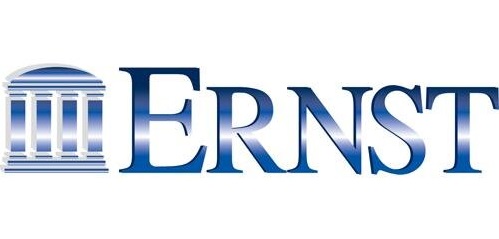NMP Next: The Impact of Social Networks: It’s What’s Next

Summertime used to mean a retreat from the world for some much needed rest and relaxation. People would disappear to some beach or forest retreat and take a paperback novel with them—printed on actual paper. There would be gaping holes in organizations across the land, as skeleton crews maintained businesses that had slowed to summertime crawls. Well, unless you worked in the U.S. housing industry, where summer vacation meant the kids were home and could be shifted to the new school that served whatever neighborhood their parents chose to move into. But even then, executives on vacation were, well … on vacation.
That doesn’t happen today. I returned last week from a two-week family vacation. We traveled across country by car, just like families used to do in the old days. People stopped doing that when it became clear that two weeks in a car, even with people you love, does not really qualify as a vacation. Again, that doesn’t happen today. While my wife drove, I was working with clients across the country, my daughter was watching The Avengers battle in Eastern Europe with a friend who was in her own bedroom in Pennsylvania and my son was in Spotifyland, wherever that is. We were on vacation, but our social networks made certain we didn’t disappear.
While the nation’s top loan officers are well aware of the power of social networks, U.S. mortgage originators are still coming up to speed on what they are and how they can be used to get more business. You’ll find plenty of great information elsewhere in this issue about social media and the power it offers modern mortgage originators. For our purposes here, in the NMP Next section, these tools haven’t really been next for more than a decade now, but the impacts they are having—and going to have—on the financial services industry will definitely be something executives here will be seeing in the days ahead.
When we think of technology’s impact on banking, we usually think in terms of the business-to-consumer (B2C) market and how fintech firms are leveraging social networks to disintermediate consumers from bankers and disrupt the market. That’s very real and you can find a million stories on this with a Google search. What’s more interesting to me is the impact on the business-to-business (B2B) market, which is less mature, but poised to be even more powerful.
A perfect case in point is the recent deal between Wells Fargo and Xero, makers of accounting software for small businesses. Wells would like more of this business, but increasingly solopreneurs are seeking banking relationships with companies that offer them better tools. You’ll find that story in this issue.
Another more subtle, but no less powerful case, is the recent deal between Ernst Publishing and First American. The latter firm has been a mortgage industry giant for decades and has built its business on thousands of B2B relationships with lenders, title agents, appraisers and closing agents. Ernst’s closing cost search engine technology is in use for more than 90 percent of the loans written in the U.S. today, based on a huge network of settlement services providers, taxing authorities and county recorders. What will happen as these two B2B social networks come together? See the story below.
Of course, we also bring you some forward-looking stories that are not solely focused on social media, but nothing we do today is really divorced from the online networks that connect us all. Doubt me? Just try to take a vacation.

The Impact of the Unexpected on Mortgage Markets
Futurists have created file cabinets full of tools for projecting timelines out into the years ahead. Some are extremely good. Not as good as Hari Seldon’s psychohistory from Isaac Asimov’s Foundation trilogy, perhaps, but capable of projecting with a high degree of certainty the most likely paths we will take into the future. Triangles, Wheels, Decision Trees and many other techniques, when applied to large data sets and fairly complete lists of short term options can yield impressive results and make it almost seem like we’re looking into a crystal ball. They would probably work perfectly if we were applying them to an unpopulated planet. People, as it turns out, play hell with prediction.
Take the recent popular vote in Britain, for example. Despite the fact that a large number of voters later admitted that they didn’t really know what the European Union was, British citizens voted to leave the EU last month. This event was largely unexpected, even by British Prime Minister Cameron, who gave voters a chance to voice their wishes in a campaign promise but then campaigned against a British exit. Futurists around the world crumpled up what they were working on and pulled out fresh sheets of paper. Someone was overheard murmuring, “Finally!” It was probably France.
When unexpected events like Brexit occur, they can make it very challenging to determine what will come next, though there was no shortage of opinion in the wake of the British vote. While pundits offered their points of view, stock markets around the world were rocked and U.S. mortgage interest rates, which have been poised to rise for like 10 years now, fell back to historic lows. Lenders who had finally come to grips with the fact that refis were dead and they were going to have to figure out how to originate purchase money loans and build business referral networks again jumped for ringing telephones. Borrowers wanted to refinance!
Of the wave of prognosticators that visited us in the wake of Brexit, few focused on the ultimate impacts of the event exclusively on the U.S. housing market. One notable exception was Lorraine Woellert’s piece in Forbes Magazine. In her article, she posed five questions for the housing market, in the voice of the American consumer. Will the move hurt home prices? What will happen to interest rates? Can I still get a mortgage? Should I put off buying a home? Should I put off selling one?
The answers she supplied are blog-worthy snippets, just big enough to get you salivating, but not meaty enough to elicit any new thinking. Her response to the home price question started with, “It depends.” Doesn’t it always?
I reached out to Mark Melikian, chief valuation officer at Chicagoland-based Summit Valuations to see what he thought of our long-term prospects. Melikian, as part of his job at Summit, compiles a monthly list of leading housing indicators in order to project future business and assess upcoming market risks. He goes above and beyond by making his report available to subscribers. He focuses on the fundamentals and his reports are well received. In his most recent report, compiled after Brexit, he writes:
 Mark Melikian, Chief Valuation Officer, Summit Valuations
Mark Melikian, Chief Valuation Officer, Summit Valuations
“This month’s pending home sales data suggests a decrease in the number of homes that will actually be recorded as sold transactions over the next 30 to 60 days. This decrease in sales volume, along with housing price affordability challenges in some markets and relatively steady inventory levels in the past month, could result in a relatively stable, or even slightly lower, median sales price in the next month. Long term, home prices in the residential real estate market continue to be driven by tight inventory, investor activity and interest rates. An increase in inventory or interest rates, or a reduction in investor activity could lead to an eventual decline in prices.”
Given the fundamentals, a reasonable look into the future. I asked Melikian what he thought of Woellert’s analysis.
“I found her take on the stock market’s impact on the consumer’s decision to buy a new home interesting,” he said. “When we see volatility in the equity markets, as we did after Brexit, we expect investors to seek out the security of bonds and Treasuries, which they did. This depresses the market, but also tends to hold down interest rates, which it also did. Fundamentals tell us that lower rates tend to mean an increase in mortgage applications and we did see that on the refi side. Woellert counters that a depressed stock market will make consumers feel less wealthy and serve as a damper on home buying. She could be right. However, the stock market only struggled for a couple of days, so that would be a short term impact.”
What will the long-term impact of Brexit be on our industry. For that, I reached out to Marx Sterbcow, Managing Attorney for the New Orleans based Sterbcow Law Group LLC. As usual for Marx, he thought through the question thoroughly through before responding.
 Marx Sterbcow, Managing Attorney, Sterbcow Law Group LLC
Marx Sterbcow, Managing Attorney, Sterbcow Law Group LLC
“Several issues are at play and you can expect the rates to go even lower in the fall, fueling another wave of refinance activity. First, the British pound still has not fully rebounded from its historic 50-year low recently, which has put pressure on the Euro and pound downward. Brexit only compounds the international financial crisis across the globe. This, coupled with an aging workforce in the U.S., fewer jobs, and a lack of a suitable job base to make up for the job losses in the U.S., is a main factor in why the economy is not rebounding but rather sinking.”
Sterbcow maintains that the Fed cannot risk raising rates due to international and domestic constraints that would cause the U.S. dollar to rise in value. If that happens, it will hamper our ability to export our goods internationally at the same time it creates an influx of cheap goods from overseas, which would further acerbate the U.S. employment crisis.
Sterbcow continued, “Second, with the Yuan valuation tumbling, the Chinese central bank let the Yuan fall recently to 6.8 per dollar to support their own economy, which is in an economic tailspin. In 2015, the Chinese economy dropped 4.5 percent year-over-year, and while the 2016 numbers haven’t come out yet, the NY/NJ Port Authority reported in May that imports fell over 268k units (which is down another 4.7 percent from last year’s dismal numbers). The volume of containers passing through just the NY Port fell by 6.1 percent in May 2016. Georgia’s Port Authority reported a 7.3 percent decrease in containers in May.”
So what do these foreign markets have to do with our housing industry?
“Those two factors are why the Fed will probably lower interest rates even further this fall,” Sterbcow said. “I expect another interest rate cut to prevent the U.S. dollar from getting too strong in relation to other currencies as foreign investors flee to the U.S. as a safe haven for currency. The Fed will not risk U.S. businesses pulling back on investments due to an interest rate increase because that would mean consumers would buy fewer homes (already at 50 year historic lows) as well as more U.S. job cuts.”
Not a pretty picture, but Sterbcow says there is a silver lining in the clouds. He warns lenders to get ready for Refinance Boom 3.0, which he says appears imminent. If homeowners return en mass to the closing table to refinance at even lower interest rates, the economic result will outweigh the negative impact of home purchase stagnation. That would be the kind of big human event that would make Hari Seldon smile.

Putting Accurate Closing Costs at Lenders' Fingertips
When the Consumer Financial Protection Bureau (CFPB) decided to simplify some of the disclosures the mortgage industry is required to provide to consumers, it integrated information required by the Truth-in-Lending Act (TILA) and the Real Estate Settlement Procedures Act (RESPA) into one integrated disclosure it called the TILA/RESPA Integrated Disclosure, or TRID. The jury is still out as to whether it has actually made anything better for borrowers, but there is no question TRID has complicated matters for mortgage lenders.
Under the new requirements, lenders are tasked with providing accurate closing cost information to the borrower on a Loan Estimate (LE) within a few days of receiving the complete loan application—which the CFPB was kind enough to define for the industry. Then, at least three days before the loan is scheduled to close, lenders must disclose again on a Closing Disclosure (CD). Here’s the rub, the numbers have to line up. If they don’t, the lender might have to redisclose to the borrower, possibly moving the close out to meet the statutory timing requirement.
Lenders need accurate pricing information very early in the process. Unfortunately, because this was never really important before, lenders have no infrastructure in place internally to gather that information, ensure that the fees have been agreed upon by both parties and then manage those fees when things change.
 What they do have is access to closing cost fee engine technology from Ernst Publishing. Ernst has been providing closing cost information to lenders for 27 years. In the beginning, the information was printed in huge volumes (thus, publishing in the company name). Carl Ernst started the company and was a driving force in the property records industry until he died and his son, who had previously been CTO, took over the company. Over the years, the company has racked up an impressive list of innovations, which you can find on its Web site, ErnstPublishing.com.
What they do have is access to closing cost fee engine technology from Ernst Publishing. Ernst has been providing closing cost information to lenders for 27 years. In the beginning, the information was printed in huge volumes (thus, publishing in the company name). Carl Ernst started the company and was a driving force in the property records industry until he died and his son, who had previously been CTO, took over the company. Over the years, the company has racked up an impressive list of innovations, which you can find on its Web site, ErnstPublishing.com.
Even though Ernst has been a leading player and authority on land recording requirements for more than two decades, many don’t know that the company’s recording fee, transfer tax and title data have been integrated throughout the title and lending industries for years. That’s because the company’s technology is mostly behind the scenes, integrated into the systems used by all 10 of the nation's top banks, all five of the top title underwriters, and nine out of 10 originators nationwide. Despite competitor’s claims to the contrary, Ernst touches about 90 percent of the nation’s new loan originations and finance transactions. It processes an average of 150 million real estate transactions each year, industry-wide.
Recently, Ernst has been moving out of the shadows. The recent news about its integration with First American shed more light on the company and its offerings. First American Mortgage Solutions, a part of the First American family of companies, provides comprehensive solutions for residential lenders and servicers covering the entire loan spectrum. First American Mortgage Solutions, together with First American's broader capabilities, serves as a single source for title and settlement, data and analytics, fraud and verification, regulatory compliance, valuation and collateral risk, quality control, fulfillment services and default services.
Late last month, Ernst announced the integration of First American Mortgage Solutions services into its closing cost search and fee management software. The seamless connection allows Ernst's lender clients to quickly and accurately get title, settlement and recording fee quotes from First American Mortgage Solutions and use them to populate the loan estimate required in many residential real estate transactions.
"Lenders working today need access to information from their third-party partners as if it were residing within their own systems," said Gregory E. Teal, president and chief executive officer of Ernst Publishing. "Today's consumers and regulators are demanding it and this new integration is another way for lenders to get it. We have a rich history of innovation at Ernst, spanning more than 26 years.”
Kevin Wall, president of First American Mortgage Solutions, said, "First American's integration with Ernst demonstrates our commitment to helping lenders deliver high-quality mortgage loans that efficiently meet today's regulatory requirements and homebuyer expectations for superior service. Lenders now have another way to quickly access accurate title, settlement and recording fee quotes from First American."
 First American Mortgage Solutions provides lenders and servicers with end-to-end solutions covering the entire lifecycle of the residential loan, from origination to post-closing and from servicing to default services.
First American Mortgage Solutions provides lenders and servicers with end-to-end solutions covering the entire lifecycle of the residential loan, from origination to post-closing and from servicing to default services.
Lenders now have one-button access to First American Mortgage Solutions through Ernst's closing cost search and fee management software. Ernst uses XML requests to directly query First American Mortgage Solutions for guaranteed-accurate fees and then propagate that information throughout all of Ernst's technology solutions, from its innovative web interface and mobile solutions to the many custom fee engines deployed by lenders around the industry.
Both First American and Ernst have developed huge B2B networks over the years. This integration will serve to connect those networks, making it easier for lenders anywhere to have access to the accurate information they must disclose to borrowers when they need it.
 Wells Fargo Creates Relationship for Sharing Consumer Data
Wells Fargo Creates Relationship for Sharing Consumer Data
Even if our business lives weren’t dominated by cloud-based software systems and a million smartphone apps, there would still be two massive trends leading us to a more electronic commercial life. The first is the rise of the Millennial, young people who have never known an unconnected world. The second is the rise of the solopreneur.
The U.S. Commerce Department estimates that there are nearly 23 million non-employer businesses operated by a self-employed individual. These solo entrepreneurs (solopreneurs) do not have access to internal accounting departments and so rely on technology to handle the financial side of their businesses. The leader in accounting software for small business is Intuit, with its Quickbooks software. But there have been a flood of new entrants into this market over the past few years.
In order to be effective, these software systems need access to the consumer’s bank account data, which they get electronically, opening everyone up to data privacy and security risks. Banks are not in a position to ignore their customer’s requests for access to their own data electronically. But neither can they afford the many expenses associated with database breaches. This has prompted some large banks to break tradition and go outside for technology development. The latest to take this path was Wells Fargo.
Wells Fargo & Company, San Francisco, is one of the nation’s largest lenders. With $1.8 trillion in assets, the bank claims to serve one in three households in the United States. The bank’s vision is to satisfy our customers’ financial needs and help them succeed financially. Today, that means granting access to financial data to third party technologies the consumer uses to manage their businesses.
 Recently, Wells announced an agreement with international software firm Xero that created a business relationship between the two firms and a new data-sharing platform for Wells Fargo small business customers who use Xero’s accounting software to manage their finances. Xero claims that more than 700,000 subscribers and their advisors in more than 180 countries use its online accounting software for small business.
Recently, Wells announced an agreement with international software firm Xero that created a business relationship between the two firms and a new data-sharing platform for Wells Fargo small business customers who use Xero’s accounting software to manage their finances. Xero claims that more than 700,000 subscribers and their advisors in more than 180 countries use its online accounting software for small business.
The new method of data sharing between Wells Fargo and Xero–driven by what the two companies are calling an innovative new application-programming interface (API) – is expected to give small business owners enhanced online security and greater control over what bank information they choose to share with the accounting software firm. The software works by facilitating a tokenized “handshake” between the companies’ servers. The API will eliminate the need for Xero customers to share their Wells Fargo usernames and passwords as well as the need for Xero to store them in order to retrieve Wells Fargo account data.
While this method of granting user access may be new to our industry, many large online firms (Google, Apple, Amazon) have been using similar user authorization methods for some time.
“We’re very pleased that Xero is the first major technology company to join us on the journey of creating a more secure and customer-focused model of sharing data between companies that have common customers,” said Brett Pitts, head of digital for Wells Fargo Virtual Channels. “In an era of increasing concern about the security of electronic financial data, it is time to move toward more secure and more reliable data exchange methods. As a result of this agreement, we’re creating a much better experience for our shared small-business customers, who will benefit considerably from the improved process that comes out of this innovative agreement.”
The approach will certainly help mitigate the risk of consumer’s accidentally granting access to their bank accounts to nefarious parties. While the specific details of the technology were not released by the companies, it sounds very similar to OAuth, short for Open Authorization, an open standard for token-based authentication and authorization in use across the Internet. OAuth makes it possible for a user’s account information to be used by third-party services without actually exposing the user's password.
“We are delighted to integrate with Wells Fargo to connect small businesses to the financial services they need to grow and thrive,” said Rod Drury, chief executive officer of Xero. “Xero, together with Wells Fargo, will help small businesses capture a true picture of their financial standing and empower our mutual customers to better access financial services, giving them greater control over their data. We believe this will fundamentally rewire how small businesses operate, and light a fire in the engine room of our economies.”
Wells Fargo is clearly interested in more business from small companies. It maintains a robust small business banking Web site, with a good library of useful content for small business owners. Providing good data security that will allow these customers to safely share their bank data with accounting software providers will likely earn them more of this business in the future.
 The Era of New Technologies
The Era of New Technologies
By Jeff Lebowitz
The following is an excerpt from Chapter 7, Volume II of The Mortgage Professional's Handbook. This chapter was contributed by industry veteran and technology specialist Jeff Lebowitz, and edited by Jess Lederman and Tomasz L Acosta. Reprinted with the author’s permission.
The mortgage industry is about to exit its Victorian era of technology use. Regulators have corseted the industry into making small-ball, prudish technology decisions. A quick assessment of the condition of technology use signals the need for a new, antithetical regime of business investment. The current technology use is uninspiring.
The very near-term future is no better than desultory. In a tormented business and regulatory environment, new investments in the mortgage value chain have been made halfheartedly. The major themes enveloping the industry are:
►Lenders display a diminished appetite for technology risk
►Investment commitments are remedial and not particularly innovative
►Technology supplier mergers sap energy from leading-edge start-up ventures
►Regulators and not strategy are dictating technology priorities
►Technology-based outsiders are being permitted to attack industry borders Investment capital generally has been immobilized.
Risk-averse lenders are operating with legacy technology. Using traditional management practices, they cannot foresee the impending industry transformation by a new operational paradigm.
Temporarily inaccessible to most mortgage lenders is a revolution in decision-making, in process engineering, and in management techniques. The financial crisis of 2007-2008, and rules promulgated by vigilante regulators have obscured lenders’ vision into and participation in the imperative to change. As the Chinese proverb instructs, “If you want to know the theory and methods of revolution, you must take part in revolution.”
The revolution is spear-headed by data scientists. The new paradigm of business is being constructed on a foundation of fact-based decisions that in turn are grounded on bounteous data. Traditional decision-making formed primary by personal experience will be supplemented by and then replaced by management-by-model algorithms. A very new way of organizing mortgage operations is around the next corner.
In 2012, the highly-regarded French management consultants Capgemini released an important study of how businesses are changing. The study found that nine out of ten business leaders “believe data is now the fourth factor of production, as fundamental to business as land, labor, and capital.” That report concludes “Big Data represents a fundamental shift in business decision making.” Facile users of data based decisioning, the “Digirati,” have significantly higher financial performance than their less digitally mature competitors.
While it is unlikely that a mortgage banking company will make the Boston Consulting Group’s list of most innovative companies, innovative change has become a management imperative. A good start would be to plan for implementation of digital and data-based technologies. Technology is moving from departmental operations to becoming a foundation for business model renovation.
Using detailed survey data on the business practices and information technology investments of 179 large publicly traded firms, researchers from the Massachusetts Institute of Technology found that firms using data-driven decision making (DDD) have productivity that is five to six percent higher than what would be expected given their other investments and information technology usage. Few lenders have integrated DDD into their businesses. Rather, for the past five years, lenders have been focusing on compliance with regulator mandates.
The financial meltdown and now a pervasive regulatory regime suggest the industry operating model was seriously flawed. Assuming that is a true assessment, there is little evidence that regulators are tinkering around the edges of revolutionary change that could be needed. Regulators (i.e., CFPB) are preoccupied with an historic problem: the financial crisis of 2007–08. Keeping Fannie Mae in conservatorship limbo and promulgating MISMO 3.4 data standards are indications that plus ça change, plus c’est la même chose—the more things change the more they stay the same.
“At the direction of our (Fannie Mae’s) regulator, the Federal Housing Finance Agency (FHFA), Freddie Mac and Fannie Mae (the GSEs) are working together on the Uniform Mortgage Data Program (UMDP). The UMDP is a multifaceted, ongoing program in which the GSEs develop and implement mortgage data standards for the single-family loans we purchase and/or securitize …”
Fungible, high quality data undoubtedly are important. Without credible scenarios for the technology platform of the future, where in the industry construct does data quality fit? Of all the industry technology requirements, what priority should be assigned to data management? How much of the industry’s technology funding should be invested in projects such as UMPD?
Ultimately, the industry will be reformed not by enforcement, but by adapting to a new operating paradigm. The new paradigm will be defined by investments in both knowledge systems and integrated transaction flows.
Jeff Lebowitz is the owner of MORTECH LLC, a marketing and strategy consulting firm. He is broadly known for senior level planning and corporate development in financial services and technology for financial market use. For more information about The Mortgage Professional's Handbook and to read the rest of this chapter, find it on Amazon.com.
Rick Grant is NMP special features editor for NMP Next and National Mortgage Professional Magazine. He may be reached by e-mail at [email protected].
This article originally appeared in the July 2016 print edition of National Mortgage Professional Magazine.





